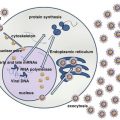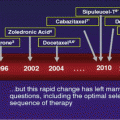Fig. 4.1
Low- and middle-income countries by the World Bank income category, 2004—all tropical countries fall in this category (Source: Data from the World Bank (2005))
2 What Is Cancer Control
Cancer control describes the totality of activities and interventions intended to reduce the burden of cancer in a population, either by reducing cancer incidence or mortality or by alleviating the suffering of people with cancer [1, 2]. Prevention, early detection, diagnosis, treatment, psychosocial support, and palliative care are the components of cancer control that can reduce the cancer burden. Surveillance and monitoring are needed to understand the cancer burden and to track progress. All of these require commitments of financial and human resources, including training and education to build the required human resource base and information for the public to understand what they can do and the services available to them. It is important to understand that cancer control activities are not all conducted within the health-care system proper, nor do they always involve only health professionals [3]. Many effective tobacco control interventions (e.g., higher taxes, bans on advertising and promotion) are legal and regulatory in nature, while making morphine available for pain control necessarily involves narcotics control authorities as well as the health-care system. Other key interventions are allied to parts of the health-care system that otherwise are unrelated to cancer. For example, vaccination against hepatitis B virus to prevent liver cancer is conducted by childhood immunization programs. Where cancer shares risk factors with other chronic diseases, tobacco being by far the most important but also including diet control measures will produce benefits for a number of diseases. Within the health-care system, some aspects of cancer control can be integrated into primary and higher health-care levels (e.g., vaccinations for HBV and human papillomavirus [HPV]), and others require specialized practitioners and equipment—especially aspects of treatment. The resources financial, human, and infrastructure required for cancer control interventions are huge. In tropical countries where those resources are not available, cancer control must build starting with interventions that are highly effective, cost-effective, and “resource-level appropriate.” Additional steps can always be taken for incremental benefits once a cancer control culture exists and resources for cancer control grow.
3 Cancer Planning
Deciding on national cancer control priorities is best accomplished through a formal process of cancer control planning at the national or, if appropriate, the subnational level. Emphasizing the importance of this step, the 58th World Health Assembly (WHA) in May 2005 approved a resolution on cancer prevention and control that calls on all 192 WHO Member States to develop national cancer plans and programs [4]. Although they must eventually be embraced by government to be fully effective, national cancer plans may be developed outside of government, such as those spearheaded by NGOs. Regardless of how the effort is led, the process must involve a broad spectrum of stakeholders and interest groups. Steps in cancer control planning have been well described by WHO [5, 6] and additional guidance is available from the Union for International Cancer Control (UICC) with particular emphasis on the role of NGOs in the development of national cancer plans. The plan does not have to cover every aspect of cancer control: e.g., an initial focus on tobacco control and palliative care can lead to success in tropical countries and open the door to adding further goals later. It is important that after endorsement of the cancer control plan by the government, it should be promoted and supported financially and programmatically through both government action and public advocacy. In both the planning and implementation phases, development partners should provide necessary guidance and financial support. Periodic monitoring and evaluation during the implementation phase is very necessary, and every 3–5 years the plan should be updated through a process that involves all major stakeholders, public and private sectors, as described by WHO, UICC, and others [7].
4 Priorities for Cancer Control in Tropical Countries
4.1 Prevention
4.1.1 Tobacco Control
At a global level, tobacco causes more premature deaths from cancer and even greater numbers from other noncommunicable diseases than any other single agent. Experience in many high-income countries has proven that tobacco use and, ultimately, its impact can be reduced substantially through a combination of policy measures. These policy measures include raising prices of tobacco products by increasing taxes on them, banning smoking in public places, banning advertising and promotion of tobacco products, requiring large and dramatic cigarette package warnings, and “counteradvertising” to publicize the adverse health effects of tobacco and the benefits of quitting. The top priority for cancer control is to convince the world’s 1.1 billion smokers, most of whom live in tropical countries to quit. Cessation by today’s smokers will lead to substantial health gains over the next five decades. Preventing children from starting smoking will have full benefits after 2050. The Framework Convention on Tobacco Control (FCTC), the first and only international public health treaty, includes the measures known largely from high-income countries to be effective. As provisions of the FCTC are implemented in tropical countries, it will be important to reevaluate their effectiveness under a range of economic and societal conditions. What is important is that every tropical country should sign and ratify the Framework Convention on Tobacco Control and implement its provisions, most importantly:
Substantial increases in taxation to raise the prices of tobacco products (goal is to have taxes at 80 % or higher of retail price)
Complete advertising and promotion bans on tobacco products
Mandating that public spaces be smoke-free
Large, explicit cigarette packet warnings in local languages (which also helps to reduce smuggling)
Support of counteradvertising to publicize the health damage from tobacco and the benefits of stopping tobacco use
4.1.2 Liver Cancer and Hepatitis B Vaccination
HBV is the cause (often in conjunction with a cofactor) of most cases of liver cancer, taking 500,000 lives each year globally. A safe and highly effective HBV vaccine has been used in most high-income countries and some low-income countries since the 1990s, yet vaccination coverage is poor to nonexistent in many tropical countries with the highest rates of liver cancer. In 2001, the latest year for which complete data are available, fewer than 10 % of babies in Southeast Asia and Africa among the worst affected areas were vaccinated against HBV.
A three-dose series of HBV vaccines costs less than $2 through UNICEF, a cost that can be subsidized by the Global Alliance for Vaccines and Immunization (GAVI). The countries where children are not immunized are mainly those with inadequate immunization programs for the more traditional vaccines; thus, this is not a problem only for HBV vaccination. The future payoffs for HBV vaccination and other scheduled immunizations are enormous; vaccination should remain as high on the cancer control agenda as it is on the child health agenda.
Vaccination cannot help the 360 million people worldwide who are currently infected with HBV. However, limiting exposure to the most ubiquitous cofactor aflatoxin can substantially lower the risk of liver cancer. Contamination of stored grain by aflatoxin a chemical produced by certain fungi under humid storage conditions can be reduced by using low-technology techniques such as drying crops in the sun, discarding moldy kernels, and storing crops in natural fiber sacks on wooden pallets. Such efforts may be worthwhile, although they are more complex than vaccination. Furthermore, about one-quarter of liver cancer is caused by hepatitis C virus (HCV) for which there is, as yet, no successful vaccine. What is important for prevention of liver cancer is:
GAVI and other international partners should continue to assist countries to incorporate HBV vaccination into their childhood immunization programs as quickly as possible, with support from the global cancer community.
Countries with a high liver cancer burden and significant aflatoxin contamination of foodstuffs should examine the options for aflatoxin exposure reduction. Development partners should help to implement those measures that are feasible and cost-effective.
4.1.3 Cervical Cancer Screening and Human Papillomavirus Vaccines
Nearly 300,000 women die from cervical cancer each year, 85 % of them in tropical countries with limited resources. The cause is persistent infection with one of several strains of the human papillomavirus (HPV). A century ago, cervical cancer was as common in the high-income countries as it is today in tropical countries. Improved living standards, effective treatment for early and somewhat advanced cancers, and screening using the Papanicolaou (Pap) smear are responsible for the steep decline in incidence and mortality in high-income countries. The strategies which could transform cervical cancer control in tropical countries are vaccines to prevent HPV infection and screening methods that are more compatible with situations where resources are very limited such as visual inspection methods as opposed to cytology-based methods such as Pap smear and a vaccine against the two most common carcinogenic strains of HPV entered the market in 2006. The initial market is in affluent countries; however, if adopted, the greatest impact of these vaccines will be in tropical countries with highest cervical cancer rates. They could prevent hundreds of thousands of deaths every year, starting several decades after establishment of a vaccination program. Governments and the international health community should take concrete steps now to develop HPV immunization policies and the means to pay for what is currently an expensive vaccine. Operational issues (e.g., developing immunization schedules, including the optimal age for immunization; deciding whether to immunize only girls or both girls and boys) also must be addressed.
Stay updated, free articles. Join our Telegram channel

Full access? Get Clinical Tree





